How to mix different wooden tones like an interior designer – 'It makes spaces feel more collected'
Using different wood tones can be tricky, but with interior designer Gabriela Eisenhart's guidelines it can lead to more curated and elevated homes

'I like to mix woods, but it can be scary for some people,' says the interior designer Gabriela Eisenhart, founder and lead of the Atlanta-based design agency Silo Studios. 'You just can't get that warmth, and that extra dimension, from decorating in any other way.'
She's right, of course. Mixing wood tones does seem a bit scary for the uninitiated. It goes against everything we've been taught, every rule we think exists in the design world (spoiler: there are, really, no hard and fast decor rules).
Every time you see an image of a Scandi-style living room it's usually always just blonde oak wood, or in a more traditional space it tends to be often just walnut. We think, therefore, that we need to pick a wood tone and stick to it throughout.
But actually, if you can be brave enough to try it, mixing wood tones will allow you some creative freedom and reward you with elevated and layered schemes. Spaces that look like they've been put together not by following some design-by-numbers handbook but by someone with flair and an eye for beauty. This is how to get it right, no matter what your interior design style.
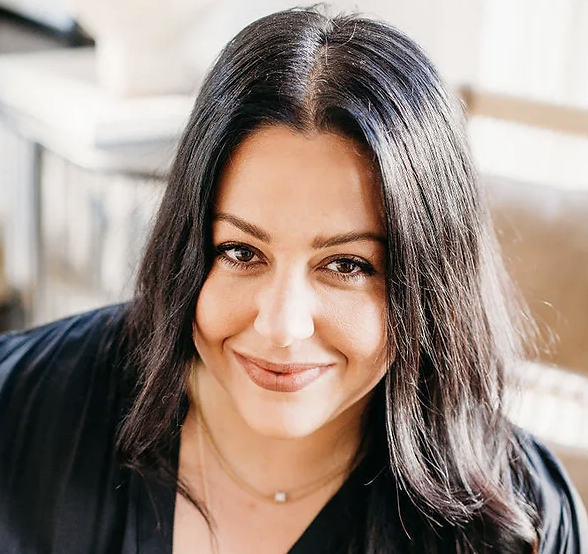
In 2012, Gabriela Eisenhart founded her first studio, Gabriela Eisenhart Interiors. Then, in 2016, in an effort to expand her footprint, she joined forces with a Los Angeles-based interior designer to co-found WAKE + LOOM. Fast forward to 2023, and after more than a decade of entrepreneurship, she opened the doors to her third studio, Silo Studios, which she named for her two sons. Since then, with the support of her all-woman team, Gabriela has transformed homes in Atlanta and beyond, making them feel good to those who inhabit them while infusing the coveted Mediterranean style into the design.
Why should you mix woods in decor schemes?
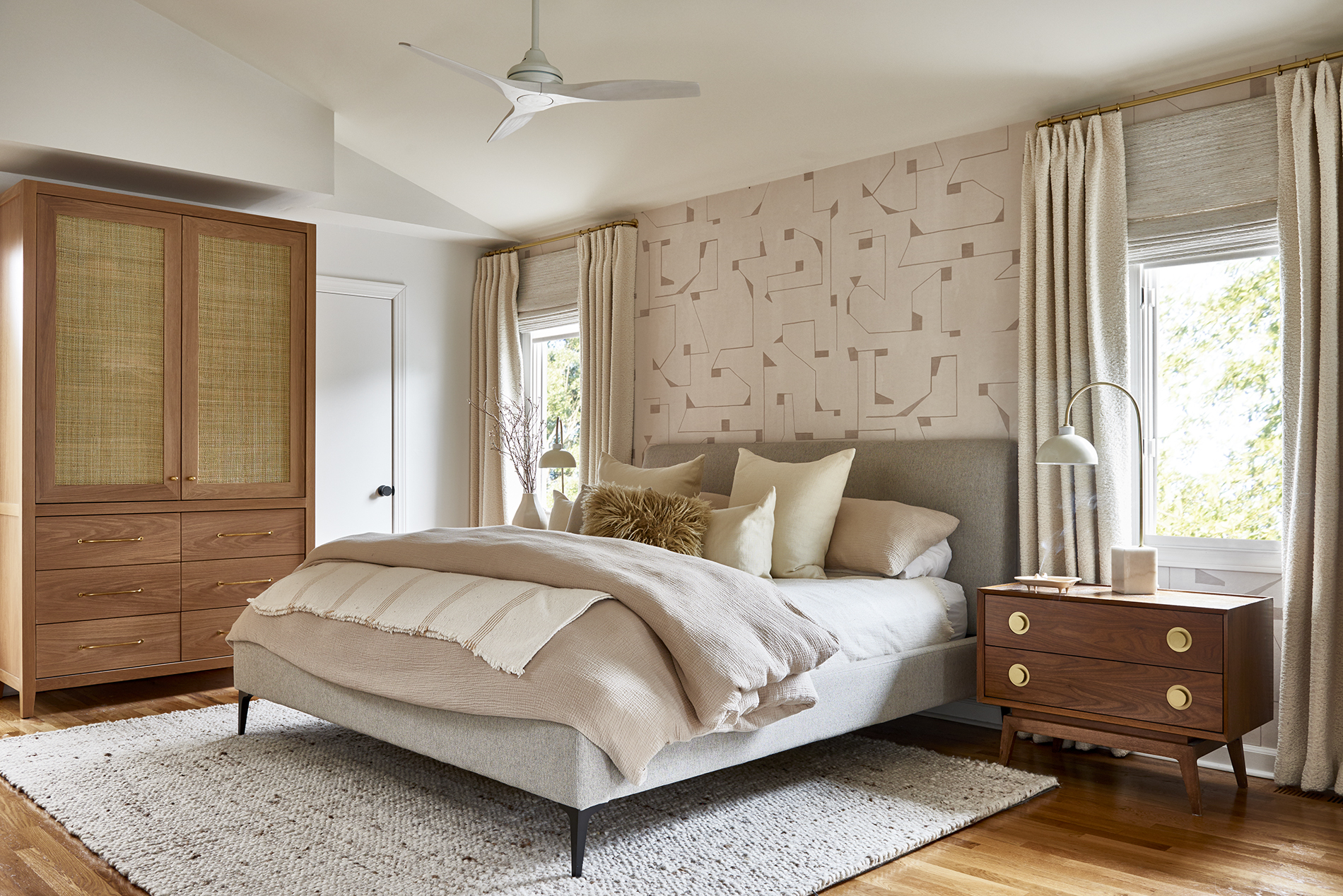
'Wood just adds such a nice natural texture that you can’t get anywhere else,' Gabriela says. 'It adds warmth. The spaces I design tend to be pretty clean-lined, pretty minimal, but they're anchored by wood, given warmth by its texture and tone.'
Gabriela feels strongly that it's only when you mix wood tones that you start to make a home feel designed, instead of simply pieced together by rote.
'Mixing wood tones gives a space a much more collected feel,' she says, a case in point being this bedroom she designed, above. 'And look, I don't like design rules. But I will say that spaces come together in a much more curated way if you feel confident to mix woods.'
She cites a recent bathroom renovation project as a prime example. 'I use a lot of white oak,' Gabriela says. 'And I've just finished an organic-modern bathroom with lots of limestone and natural, honed marble. Then there was a big white oak vanity that takes up about 80% of the wall. When it was finished, it was all very beautiful and calming, but was lacking something, that extra element that would bring it all together.'
Gabriela went antiquing, found a vintage stool in a a walnut wood 'that was all weathered and water-stained and characterful, and suddenly the whole room felt more collected.'
How tricky is it to mix wood tones?
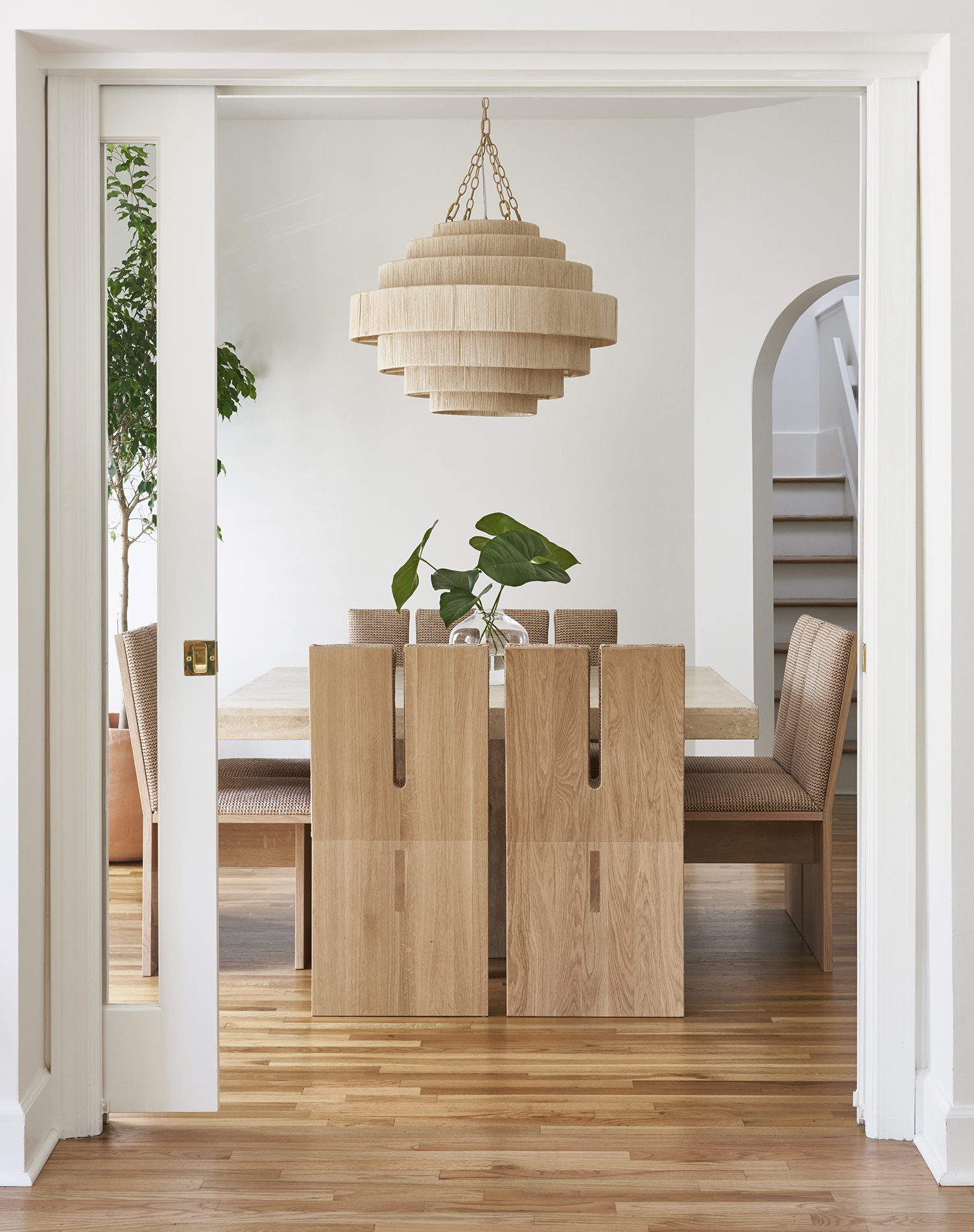
Gabriela admits that this approach is not for the faint hearted, but by following her guidelines the rewards can be great. 'It can be tricky to mix wood tones because you have to be prepared to be working with tonal difference,' she says. 'For example, white oak and walnut are very different, yet work, whereas white oak and weathered oak are going to fall flat because they're almost too similar.'
In this dining room, above, Gabriela played around with woods that are similarly toned but brought in different textures which helped to add that extra dimension she is always striving for. 'The dining room was tonally monochromatic, but because the textures are so different there is still plenty of character,' she says.
What are the best wood tone combinations?
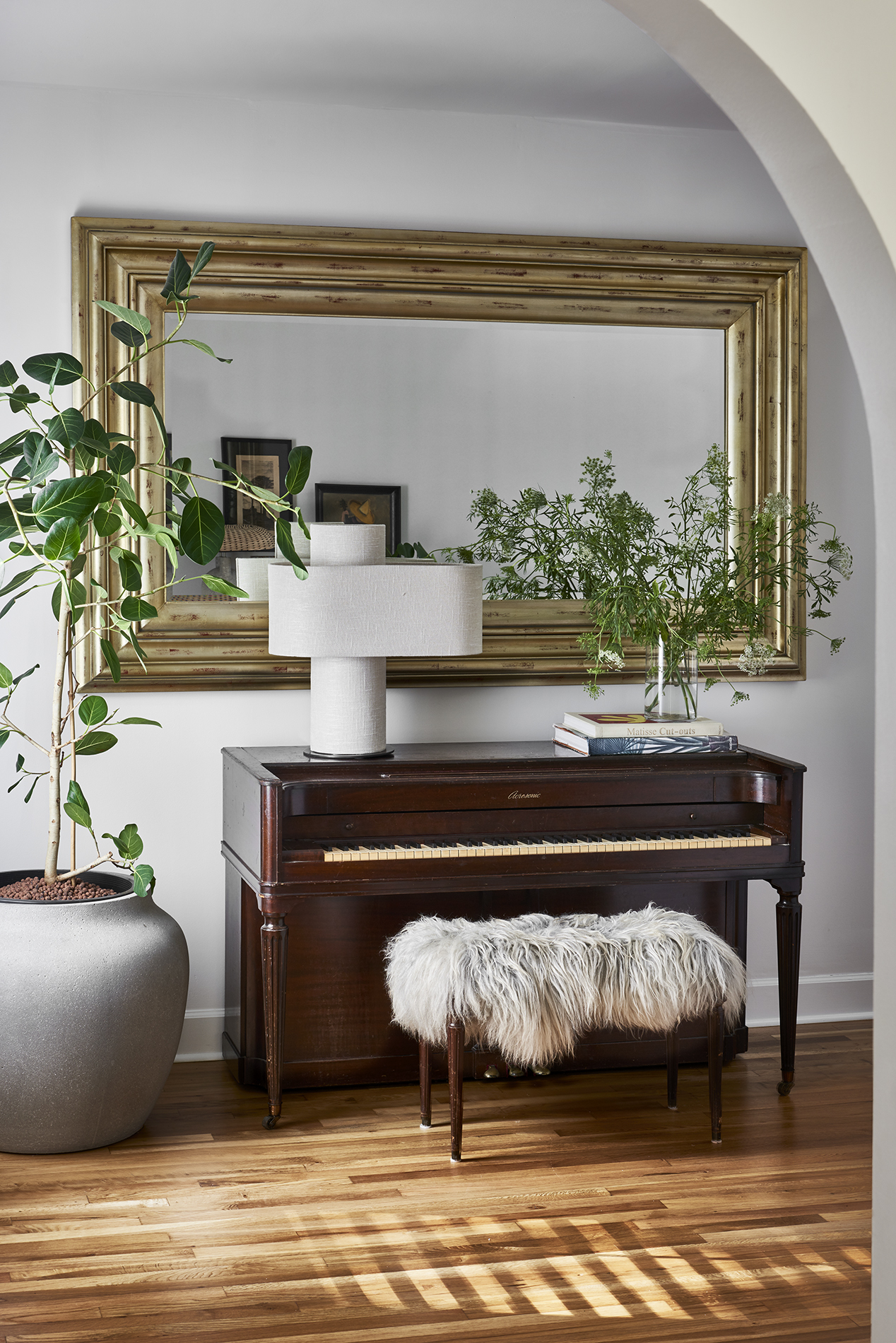
Gabriela says that a lot of her curation is instinctive 'which I admit isn't very helpful,' but she finds that white oak and walnut work particularly well together. The trick is that no one wood tone is ever found entirely on its own.
'In my own home, I have a piano from the 1900s that was an heirloom, that I knew I had to find a way to make work as I would never get rid of it,' Gabriela says. 'It was made from a rich walnut wood, but my floors are oak.' To bridge the two together, Gabriela found a piano stool in the same tone as the piano itself, so the walnut piano didn't seem like a total outlier.
Can you mix warm and cool tone woods?
'The thought of mixing warm and cool tone woods is making me feel a bit sick inside!' Gabriela says. 'When I think of cool tone woods I'm thinking of grays and ashy woods, which I tend to lean away from anyway. If I were to work with them, I'd probably favor blacks instead of other woods.'
As a general rule of thumb, keep warm tones together – like reddish walnuts and cherries with sunny yellow oaks – and don't let them near ashy gray-tinged cool-tone woods like ash and maple, which are better in their own palette.
What woods go well with oak floors?
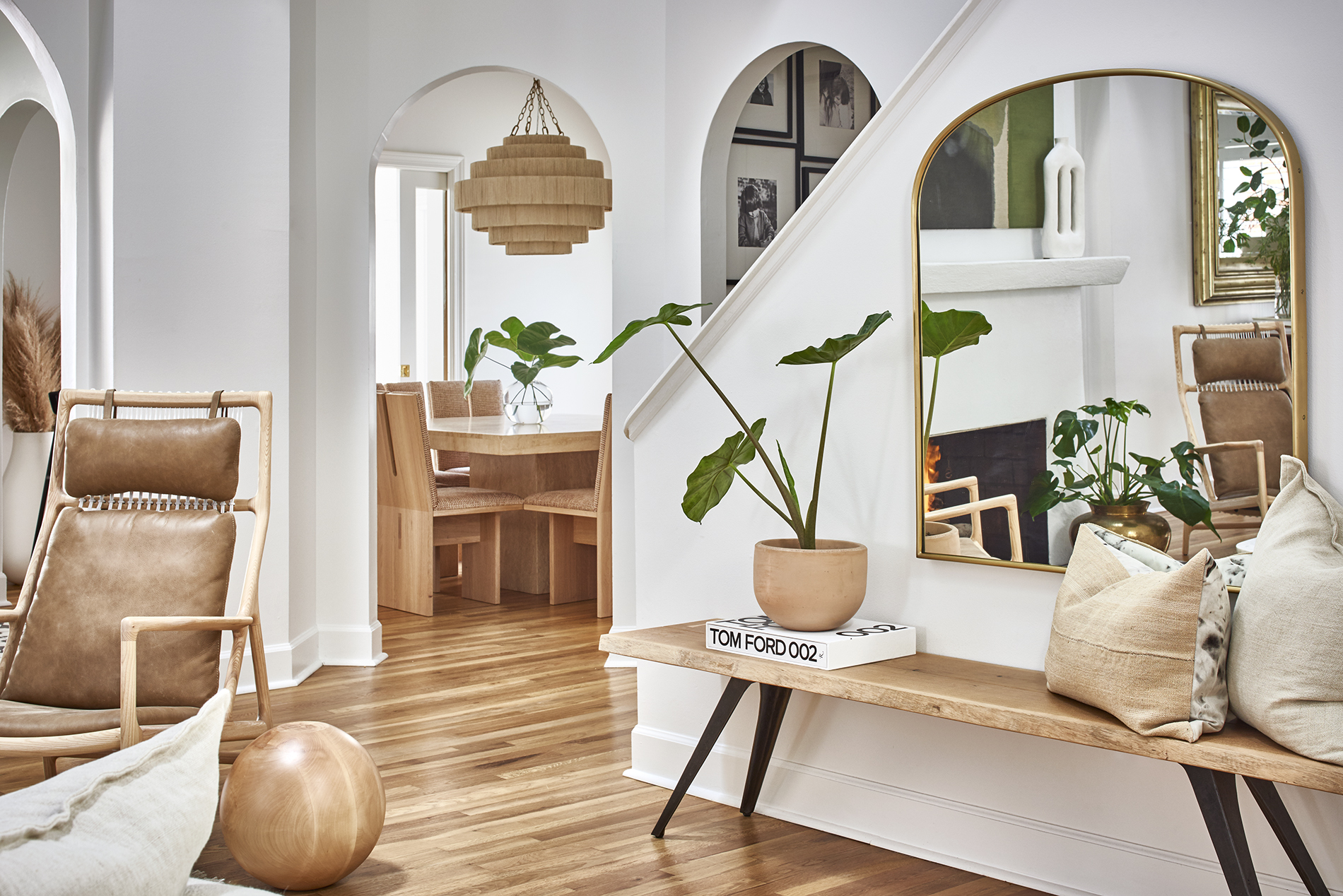
Oak floors are pretty popular, whether you chose them or inherited them – what should you layer on top of them?
Gabriela has previously mentioned that walnut goes well with oak 'as long as it's not one piece of walnut, and you'd want about 20% of your furniture to be walnut to make it work,' she warns. 'But if you want a minimal look to go with your oak floors then play around with the difference of texture. You might have some untreated oak next to some varnished, smoothed or glossily finished pieces.' This is the approach she took in this space, above, where the bench is raw but the ball ornament is glossed.
How do you mix vintage wood into a modern home?
Vintage wood tends to be redder in tone – from Queen Anne or Arts and Craft furniture to the deep stains used on mid-century G-Plan pieces. The trick is for every wood you use to have a companion, so nothing stands out on its own.
'When I'm antiquing, I just know when a wood piece is right, it sings to me,' Gabriela says. 'I wanted it to be worn and to have to sage it when I get it home because it's got some strange dark history that I don't want to know about! I want it to feel like it has been around for 1000 years, but I will always find another piece in a similar or same wood tone to match it to.'
In the modern bathroom she talked about earlier, where she found a weathered walnut stool to complement the white oak vanity, she had some wall art framed in the same tone of walnut wood 'which brought everything together.'
Mixing woods within the same space adds instant depth and interest, but as Gabriela points out, it does take a bit of thought to get it right. Just follow her tried and tested advice, and do some experimenting of your own in your own space to see what works in your home.
Sign up to the Homes & Gardens newsletter
Design expertise in your inbox – from inspiring decorating ideas and beautiful celebrity homes to practical gardening advice and shopping round-ups.
Pip Rich is an interiors journalist and editor with 20 years' experience, having written for all of the UK's biggest titles. Most recently, he was the Global Editor in Chief of our sister brand, Livingetc, where he now continues in a consulting role as Executive Editor. Before that, he was acting editor of Homes & Gardens, and has held staff positions at Sunday Times Style, ELLE Decoration, Red and Grazia. He has written three books – his most recent, A New Leaf, looked at the homes of architects who had decorated with house plants. Over his career, he has interviewed pretty much every interior designer working today, soaking up their knowledge and wisdom so as to become an expert himself.
-
 Martha Stewart's tips for arranging daffodils are unbelievably simple and effective – it's the only flower advice you need this springtime
Martha Stewart's tips for arranging daffodils are unbelievably simple and effective – it's the only flower advice you need this springtimeMartha shows us that we can create gorgeous bouquets of this seasonal flower by simply trimming the stems and placing them in specific vases
By Hannah Ziegler Published
-
 Designers share how to make your outdoor living room look more expensive – and the affordable products to get you there
Designers share how to make your outdoor living room look more expensive – and the affordable products to get you thereFrom layered lighting to luxe-looking textiles, these simple swaps made all the difference
By Charlotte Olby Published
